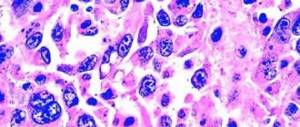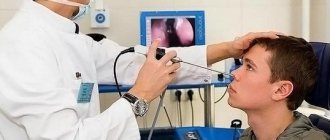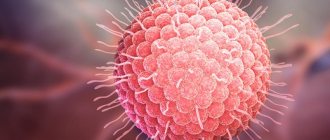What is clubfoot in children and ICD 10 code
Flat feet and club feet in young children are deformations of the arches of the feet, leading to a change in location. A person faces many inconveniences (unaesthetic, pain while walking). The heel moves during movement, rather than being placed over the entire area. As a rule, the pathology concerns two legs.
The International Classification of Diseases (ICD code) includes clubfoot in the list of diseases under the code Q-66. The gradation of the disease systematizes information. Qualified doctors will be able to diagnose the disorder and select the optimal treatment regimen. Often the disease is a consequence of incorrect formation of the bone skeleton, dysfunction of muscle tissue and joints. The pathology should be treated comprehensively, under the strict supervision of a physician.
Forms of the disease
Foot deformity, regardless of the nature of its occurrence, can be of varying degrees of severity:
- Light – characterized by a slight inward deviation of the foot, with the simultaneous unfolding of the outer edge of the foot upward. Mobility is preserved both in the ankle joint and when the foot is abducted to the correct position.
- The average form is detected very quickly and is characterized by limited movement in the joint, tight adduction of the foot and upward displacement of the heel. To correct this form, early and long-term treatment is required.
- Severe form - most often an atypical, bony form in which the metatarsals are noticeably curved and a clear crease is visible on the foot. The feet are short, with a dense pad of fat, the big toe is noticeably shorter than the others. This is the most difficult form to treat and most often requires surgery to eliminate or correct it.
Signs of appearance in children
The first signs of clubfoot in children can be detected visually, when the child gets to his feet and takes his first steps. Symptoms of the disorder:
- the sole is turned to the inside;
- the inner edge of the foot rises during movement, the outer edge goes down;
- the plantar part has a bend in the foot;
- gait is incorrect (as with cerebral palsy);
- a person's movement is limited, the ankle cannot cope with fundamental functions.
Due to the large number of therapeutic methods, symptoms and signs of pathology appear in every person. In some children, atrophy of the ankle muscle structures occurs, leading to foot subluxations. The knee joints become pathologically immobile. The skin becomes rough around the outside of the sole.
Symptoms
With congenital clubfoot, there are signs and symptoms that are noticeable already in the first year of a child’s life - the equinus state, when the muscles and ligaments are fixed in the position of plantar flexion; the state of adduction is when the foot is raised with the toes up and the state of supination is when the foot, or rather, its outer part, is lowered down.
The classic position of the foot with this disease is as follows: the outer side is directed back and down, the inner side is concave and directed upward, the dorsal side is inclined downward, the plantar side is raised up and deflected back.
You can independently diagnose such a disease based on such signs as the fact that the child walks with a pronounced limp, while “raking” with his leg. In a standing position, especially at 1 year of age, the feet bend inward, which resembles the stance of a clumsy bear. But this position of the feet does not always indicate clubfoot. This may be a signal of pathology of the cervical spine. There is also a noticeable dysfunction of the muscles, which is manifested by their “squeezing”. In this case, foot massage and medications - muscle relaxants - will help. Weakness of muscle structures can be corrected by therapeutic exercises.
Types of clubfoot
Congenital clubfoot in children is a common ailment in the field of defects of the musculoskeletal system. The disease does not allow the child to fully place the sole on the surface due to abnormalities in the development of the ankle joint. Depending on the etiology of the disease, there are types:
- Congenital is divided into typical and atypical deformities. In the first option, the foot has a bend in the direction of the sole, the heel is shifted upward. Varus, adduction, and supination are observed. In the second case, pronounced signs are observed. Deep folds form on the sole. The feet are short and plump. The metatarsal bones transform over time into a rigid cavus. A different treatment protocol is prescribed.
- Acquired occurs due to nervous disorders, incorrect fusion of the ankle bones. The disorder is affected by inflammatory processes and various tumors. Severe burns are the initial sources of the formation of the disease.
There are a number of key factors influencing the development of congenital leg deformities. First of all, heredity. Next come serious genetic disorders in the form of Edwards disease. A dangerous pathology leads to an increase in 18 pairs of chromosomes. Systematic consumption of alcohol and smoking cigarettes negatively affect the condition of the musculoskeletal system of the mother and unborn child.
Amniotic bands directly in the uterus of a pregnant woman in most cases do not affect the development of the fetus. However, strong constrictions can provoke the formation of clubfoot in a newborn.
Causes
It is impossible to say exactly what causes contribute to the occurrence of the disease. But the following predisposing factors to the development of clubfoot can be named:
- The baby is in an incorrect position in the womb. This is explained by the pressure of the uterus on the undeveloped skeleton of the child. And since the baby’s blood circulation is also not yet fully formed, the disease progresses and the feet turn inward.
- Some medications that a pregnant woman takes can also cause the development of pathology.
- Hereditary factor. In this case, heredity means the transmission of a predisposition to pathology from mother to child. In other words, if a woman suffered from clubfoot, the risk of the disease in her child increases.
- Inconsistency in the development of ligaments and muscles.
The causes of clubfoot may lie in systemic anomalies of fetal formation. This may be Edwards disease, when the eighteenth pair of chromosomes is lost.
In addition to the congenital form of the disease, there is also an acquired form. The reasons in this case are different: improper fusion of bones after their fracture, a significant degree of burn on the feet and legs, bone pathologies, neurological diseases, tumors.
Treatment methods for children and adolescents
The early stage of clubfoot is corrected in children using conservative therapy. The child's feet are fixed for a healing massage. Physical therapy (physical therapy) is performed from the first week of birth to 12 months. Using orthopedic shoes is an effective option for correcting uneven feet. Popular options are splints worn at night. From the age of 8, it is rational to conduct complex sports activities, swimming exercises, and special dances. If conservative approaches do not give a positive result, surgery is prescribed.
| Name | Characteristics |
| Wellness massage | Manipulations are carried out for mild to moderate severity of pathology. The procedures relax the internal, posterior muscle structures of the lower leg. The high tone of the movements is concentrated here. The duration of the rehabilitation course is determined by a qualified orthopedist. |
| Kinesiotherapy | Therapeutic exercises increase muscle activity. Exercises are performed systematically until the baby’s complete recovery. |
| Applying soft dressings | The treatment method gives results for mild clubfoot. The exercises are combined with gymnastics. A popular option is a combination of Fink-Ettingen bandaging and corrective exercises. |
| Orthotics | Using removable devices to straighten the foot. Professional orthopedists use a number of special products to perform the procedure. Splint (for joints), shave (made of elastic materials). Custom-made orthopedic insoles are effective. |
| Plastering | The conservative treatment mechanism is based on the use of a plaster cast. The product is changed every 7 days. The doctor corrects the varus, supinates the foot, and applies a fixing bandage. The effectiveness of treatment is 58%. |
| Surgical intervention | The technique of performing the operation closely correlates with the degree of development of the disease. The operation concerns soft tissues, the skeleton of the foot, and muscles. Interventions according to Volkov and Sturm are considered effective and safe. |
The therapeutic method according to Vilensky is known all over the world. Treatment is based on the use of a series of ordered actions:
- plastering of legs (“boots”) at different stages;
- use of orthopedic devices with types of splints;
- the use of medical physiotherapeutic procedures (paraffin applications);
- performing a relaxing massage every 24 hours for different muscle groups;
- taking warm baths to which pine needle extract is added, the liquid helps reduce hypertonicity and strengthens the body;
- systematic implementation of prevention at home.
Mechanisms of development of flattopia and clubfoot
Flat feet and club feet are a scourge for the musculoskeletal systems. If pathologies are not treated, the child’s fragile body may encounter a number of additional disorders and complications. The pathogenesis of diseases has similar causes of development. Only in individual cases the causes of diseases differ.
| Name of disorder | The process of becoming |
| Flat feet | The disease manifests itself during the period of intensive growth (6 months and 5 years). Bones acquire a stable shape and structure. Ligaments and muscles are in a weak condition. The height of the longitudinal arches changes under load. Spring functions are declining. There is a risk of developing flat feet. To maintain balance, the child spreads his legs wide. |
| Clubfoot | The basis of the disease is a despastic process that affects the damage to the foot and lower leg. Deformation of bone and cartilage tissue is observed. Over time, the child is unable to place his leg in a normal position. An important factor in the disorder is heredity. Valgus syndrome can lead to serious complications. Rehabilitation lasts several months even using Komarovsky’s method. |
How parents can notice the disease
In some cases, caring parents can quite accurately suspect their child has clubfoot.
If they are parallel to each other, then we are not talking about any violations. But if the traces are developed, then such parents and their child have a direct path to a specialist .
The disease can be indicated by the baby's gait and the way he places his legs when he does not control himself and his body is completely relaxed, for example, in the morning, when he just woke up. Also, a child’s clubfoot is most noticeable during play, when he naturally behaves in the process of hobby.
To determine the muscles that influence the pathology, it must be placed on the stomach in such a way that the lower limbs to the level of the ankle protrude beyond the edges of the surface on which it lies. When trying to move the legs and with a relaxed body, the child will immediately feel which muscles are most tense at the moment. Parents can also feel these tense muscles themselves. In practice, most often they are the muscles of the lumbar region and back. It is they who need to be relaxed during the treatment process by performing massages and special exercises.
Reading...
How and why to treat a newborn’s navel if it is bleeding
Possible complications and treatment prognosis
Neglect of a child's health is common. The danger is that the pathology can lead to a number of complications over a short period of time:
- atrophy of muscle structures (dangerous manifestation);
- the sole of the foot becomes rough;
- the knee joint ceases to function normally;
- the tendon gradually atrophies outward.
Improper walking at an early age is a source of callus formation. Muscle atrophy is accompanied by pain. The baby feels uncomfortable standing. If the disorder is left untreated, disability may develop. Clubfoot is the starting point for the development of spinal curvature. Over time, the disease affects hernia and joint dysfunction. Dislocations of the ankle are often observed.
A child's clubfoot affects his emotional state. Neuroses and the formation of an inferiority complex are common cases in pediatrics.
The article has been verified by the editors










